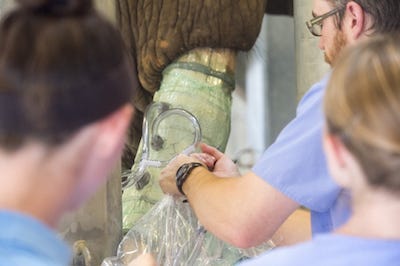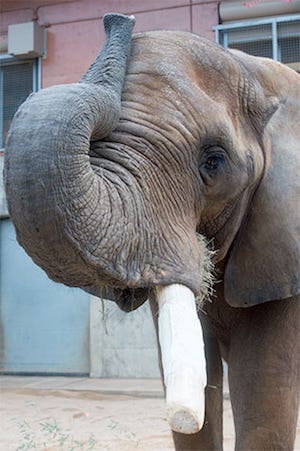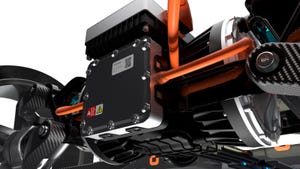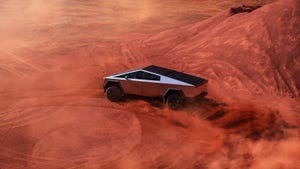Materials scientist engineers metal-replacement technology to save elephant tusks
We often write about advances in metal replacement, but this is the first time I have come across an example where the technology is helping to save elephant tusks.Back in November 2015, Dr. Brian Pillay, director of the University of Alabama at Birmingham (UAB) Materials Processing and Applications Development Center, was approached by Birmingham Zoo veterinarians, who were concerned about a crack growing in the tusk of their oldest elephant, Bulwagi.
January 28, 2016
We often write about advances in metal replacement, but this is the first time I have come across an example where the technology is helping to save elephant tusks.
Back in November 2015, Dr. Brian Pillay, director of the University of Alabama at Birmingham (UAB) Materials Processing and Applications Development Center, was approached by Birmingham Zoo veterinarians, who were concerned about a crack growing in the tusk of their oldest elephant, Bulwagi.
|
Image courtesy Katherine Shonesy/UAB. |
A cracked tusk can become infected and pose problems for an elephant, writes Katherine Shonesy on the UAB news site. Tusks with cracks that are left untreated ultimately may have to be removed. "An open crack is a site for infection, as a tusk is basically a tooth," Pillay told Shonesy. "Imagine having a crack in your tooth—it's rather painful for the elephants, as well."
The conventional treatment for cracked tusks involves the use of a metal ring to prevent the crack from spreading. "It's got to be a very heavy solution, not to mention it would be pretty ugly," Pillay told Motherboard, a Vice channel, reporting on the project. There ought to be a better way, thought Pillay, who figured that the research he has done in developing materials that are lighter, stronger and tougher than steel, typically used in airplanes and bridges, could be applied in a biological setting.
The zoo's team of veterinarians, animal care specialists and curators worked with students and researchers from UAB to prepare, then apply, a composite fiberglass and carbon-fiber band and resin on Bulwagi's tusk, explains Shonesy. "We worked with Dr. Pillay's lab to practice applying this product on a PVC pipe to start off with as a model," said Richard Sim, associate veterinarian at the zoo. Ultimately, they applied layers of carbon fiber and fiberglass around the tusk, and then used a vacuum pump to suck an epoxy-like resin into the structure. "It set and became a really hard structure that is going to resist the forces that resulted in the crack," Sim said. "No one has done this before, so it's our hope that this will be a process that will stand the test of time."
|
Image courtesy Katherine Shonesy/UAB. |
Although the tusk repair material is working as intended, the intervention may have come too late for Bulwagi. Speaking with Motherboard, Sim said that the tusk ultimately became infected following the procedure and that the elephant is being monitored in case further action is needed.
The innovation has attracted the attention of other zoos, however, which have requested more information. Pillay said that he is considering writing a manual for veterinarians that would allow them to perform this procedure.
"We were able to come up with a new idea that helps the elephant," Sim told Motherboard. "That made for the cool intersection between the industrial engineering part of this and biological husbandry. It's been fun to work on."
About the Author(s)
You May Also Like






